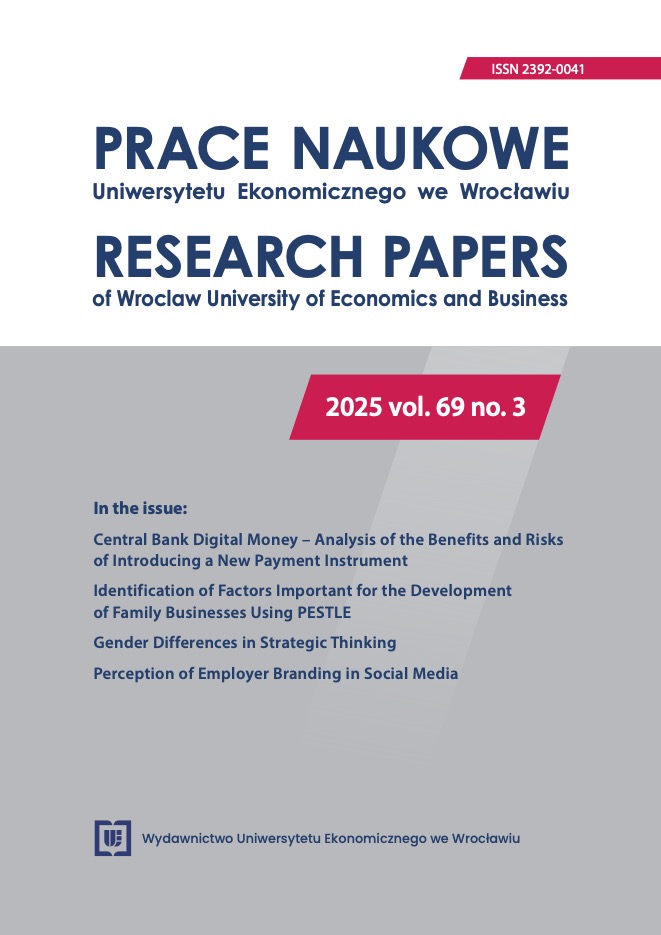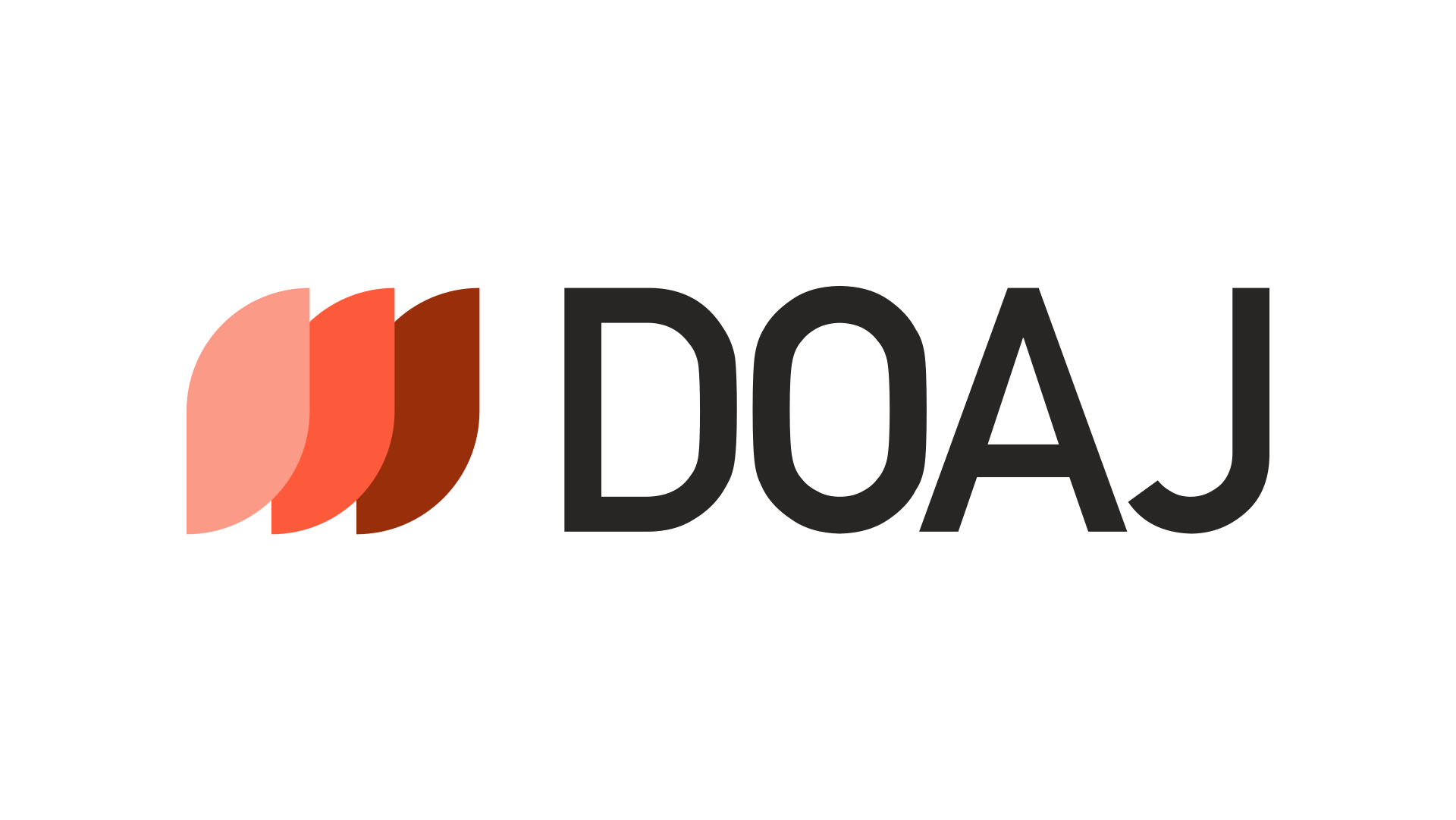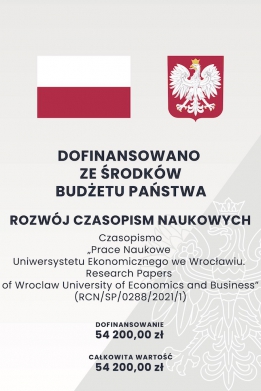Waste in the Nonprofit Sector in the Context of the 7+1 Muda Method
DOI:
https://doi.org/10.15611/pn.2025.3.05Keywords:
7+1 Muda, lean management, management, waste, non-profitAbstract
Aim: The paper aims to identify the manifestations of waste in non-governmental organizations based on the Lean Management philosophy, specifically 7+1 Muda.
Methodology: To realise the research aim the narrative literature review was conducted. The examples of waste occurring in non-profit activities described in the literature were compared with its analogous examples occurring in for-profit activities and public institutions. Waste in non-profit organizations was also classified according to the categories described in the 7+1 Muda method.
Results: The phenomenon of waste can have many forms, and being often hidden or unrecognised, it can negatively affect the activities of an NGO from operational and strategic perspectives. Waste in nonprofit organizations generally stems from structural, operational, and financial inefficiencies. Based on the 7+1 Muda framework, the key characteristics of waste in the non-profit sector may include: overproduction, overprocessing, excessive transportation, excessive inventory, motion waste, waiting time, defects, unused human potential (8th Muda).
Implications and recommendations: this study may serve as a guide for nonprofits to identify and combat inefficiencies, ultimately leading to greater sustainability, improved impact, and better service to beneficiaries. By diagnosing waste within nonprofit activities, organizations can implement strategies to optimise processes, reduce unnecessary costs, and enhance overall performance. Additionally, the study provides insights into eliminating inefficiencies that drain financial assets and offers a framework for assessing waste in processes, allowing nonprofit leaders to make informed decisions on process improvements, resource distribution, and long-term sustainability.
Originality/value: This article contributes to the discussion about the main causes of waste and its actual impact on non-governmental activities.
Downloads
References
Bealt, J., Fernandez-Barrera, J., & Mansouri, S. (2016). Collaborative Relationships between Logistics Service Providers and Humanitarian Organizations during Disaster Relief Operations. Journal of Humanitarian Logistics and Supply Chain Management, 6(2), 118-136.
Beamon, B. M., & Balcik, B. (2008). Performance Measurement in Humanitarian Relief Chains. International Journal of Public Sector Management, 21(1), 4-25.
Bednarek, M. (2007). Doskonalenie systemów zarządzania, nowa droga do przedsiębiorstwa lean. Difin.
Beechler, S., & Bird, A. (1991). Japanese Multinationals Abroad: Individual and Organizational Learning. Oxford University Press.
Bowen, D., & Youngdahl, W. (1998). Lean Service: In Defence of a Production − Line Approach. International Journal of Service Industry Management, 9(3).
Burka, I. (2012). O marnotrawstwie w literaturze nauk o zarządzaniu. Problemy Jakości, 44(7-8).
Caldera, H., Desha, C., & Dawes, L. (2017). Exploring the Role of Lean Thinking in Sustainable Business Practice: A Systematic Literature Review. Journal of Cleaner Production, 167(1), 1546-1565.
Cheng, C., & Chang, P. (2012). Implementation of the Lean Six Sigma Framework in Non-Profit Organisations: A Case Study. Total Quality Management and Business Excellence, 23(3-4), 431-447.
Cusumano, M. (1994, Summer). The Limits of Lean. Sloan Management Review.
Dahan, N., Doh, J., Oetzel, J., & Yazjii, M. (2010). Corporate − NGO collaboration: Co-creating New Business Models for Developing Markets. Long Range Planning, 43(2-3), 326-342.
Day, J., Melnyk, S., Larson, P., Davis, E., & Whybark, D. (2012). Humanitarian and Disaster Supply Chains: A Matter of Life and Death. Journal of Supply Chain Management, 48(2), 21-36.
Fabrizio, T., & Tapping, D. (2006). 5S for the Office − Organizing the Workplace to Eliminate Waste. Productivity Press.
Firas, R. (2018). Transfer of Knowhow and Experiences from Commercial Logistics into Humanitarian Logistics to Improve Rescue Missions in Disaster Areas. Journal of Management and Sustainability, 8(3), 65-70.
Fujimoto, T., & Shimokawa, K. (2009). The Birth of Lean. Lean Enterprise Institute, Inc.
Gapp, R., Fisher, R., & Kobayashi, K. (2008). Implementing 5S within a Japanese Context: An Integrated Management System. Management Decision, 46(4), 565-579.
Glover, W. J., Poopunsri, T., & Hurley, R. (2014). Applying Lean to Non-Profit Organizations: A Food Bank Case Study. Proceedings of the 2014 Industrial and Systems Engineering Research Conference.
Golińska-Dawson, P., Kosacka, M., & Werner-Lewandowska, K. (2015). Gdzie i jak usprawnić procesy? Identyfikacja potencjałów optymalizacyjnych przez analizę marnotrawstw (muda) w perspektywie zrównoważonego wykorzystania zasobów. Logistyka, 2(1), 167-178.
Grudowski, P., & Leseure, E. (2013). LSS Plutus. Lean Six Sigma dla małych i średnich przedsiębiorstw. Wydawnictwo WNT.
Gupta, S., Sharma, M., & Sunder, M. (2016). Lean Services: A Systematic Review. International Journal of Productivity and Performance Management, 65(8), 1025-1056.
Hines, P., & Rich, N. (1997). The Seven Value Stream Mapping Tools. International Journal of Operations & Production Management, 17(1), 46-64.
Hogg, T. (1993). Lean Manufacturing. Human Systems Management, 12(1).
Keegan, R. (2011). Becoming Lean. Practical Steps to Build Competitiveness. Enterprise Ireland.
Klaus, W., & Jędraszko, B. (2011). Bariery w rozwoju warszawskich organizacji pozarządowych. Punk widzenia kadry organizacji oraz współpracujących z nimi urzędników. Stowarzyszenie Interwencji Prawnej. Retrieved January 3, 2022, from https://fakty.ngo.pl/raporty/zbadali-bariery-w-rozwoju-warszawskich-organizacji
Lamming, R. (1996). Squaring Lean Supply with Supply Chain Management. International Journal of Operations and Production Management, 16(2), 183-196. https://doi.org/10.1108/01443579610109910
Ledbetter, P. (2018). The Toyota Template. The Plan for Just-in-Time and Culture Change Beyond Lean Tools. CRC Press.
Levinson, W. (2014). The Hardest Part of Lean is to See the Waste. Industryweek.com. Retrieved June 30, 2023, from https://www.industryweek.com/operations/continuous-improvement/article/21964318/the-hardest-part-of-lean-is-to-see-the-waste
Levitt, T. (1972). Production-Line Approach to Service. Harvard Business Review, 50, 41-52.
Liker, J. K. (2005). Droga Toyoty. 14 zasad zarządzania wiodącej firmy produkcyjnej świata. MT Business.
Liker, J. K. (2014). The Toyota way: 14 Management Principles from the World’s Greatest Manufacturer. McGraw Hill.
Lisiecka, K., & Burka, I. (2015). Źródła powstawania marnotrawstwa w organizacjach na przykładzie usługowych przedsiębiorstw ciepłowniczych. Zeszyty Naukowe Uniwersytetu Ekonomicznego w Katowicach, 233(3).
Mogotsi, K., & Saruchera, F. (2023). The Influence of Lean Thinking on Philanthropic Organisations' Disaster Response Processes. Journal of Humanitarian Logistics and Supply Chain Management, 13(1), 42-60.
Moshtari, M., & Vanpoucke, E. (2021). Building Successful NGO−Business Relationships: A Social Capital Perspective. Journal of Supply Chain Management, 57(3), 104-129. https://doi.org/10.1111/jscm.12243
Ohno, T. (1988). Toyota Production System. Beyond Large-Scale Production. Productivity Press.
Oliver, L., Jones, T. D., Delbridge, R., Lowe, J., Roberts, P., & Thayer, B. (1994). Worldwide Manufacturing Competitiveness Study: The Second Lean Enterprise Report. Andersen Consulting.
Parkes, A. (2015). Lean Management Genesis. Management, 19(2).
Pieńkowski, M. (2016). Implementation of Lean Management in Non-Governmental Organisations. Wroclaw Food Bank case study. International Journal of Contemporary Management, 15(1), 127.
Provan, K., & Kenis, P. (2008). Modes of Network Governance: Structure, Management, and Effectiveness. Journal of Public Administration Research and Theory, 18(2), 229-252. https://doi.org/10.1093/jopart/mum015
Radnor, Z., Walley, P., Stephens, A., & Bucci, G. (2006). Evaluation of the Lean Approach to Business Management and Its Use in the Public Sector. Scottish Executive Social Research.
Ramkrishna, S., Padmanava, A., Ganapathy, L., & Manoj, T. (2021). A Lean Approach to Healthcare Management Using Multi Criteria Decision Making. OPSEARCH, 58, 610-635.
Rifai, F. (2018). Transfer of Knowhow and Experiences from Commercial Logistics into Humanitarian Logistics to Improve Rescue Missions in Disaster Areas. Journal of Management and Sustainability, 8(3), 63-73.
Rodriguez, J., Gimenez Thomsen, C., Arenas, D., & Pagell, M. (2016). NGOs' Initiatives to Enhance Social Sustainability in the Supply Chain: Poverty Alleviation through Supplier Development Programs. Journal of Supply Chain Management, 52(3), 83-108.
Roser, C. (2015). The Seven Types of Waste (Muda) – Now with 24 More Types of Waste Absolutely Free! Allaboutlean.com. Retrieved June 30, 2023, from https://www.allaboutlean.com/muda/
Shafiq, M., & Soratana, K. (2019). Lean and Agile Paradigims in Humanitarian Organization's Logistics and Supply Chain Management. Scientific Journal of Logistics, 15(1), 139-153.
Shumate, M., Hsieh, P. Y., & O'Connor, A. (2018). A Nonprofit Perspective on Business–Nonprofit Partnerships: Extending the Symbiotic Sustainability Model. Business & Society, 57(7), 1337-1373.
Suarez-Barraza, M., & Ramis-Pujol, J. (2010). Implementation of Lean-Kaizen in the Human Resource Service Process: A Case Study in a Mexican Public Service Organisation. Journal of Manufacturing Technology Management, 21(3), 388-410.
Syrett, M., & Lammiman, J. (1997). From Leanness to Fitness. Cromwell Press.
Tatham, P., & Spens, K. (2015). Cracking the Humanitarian Logistic Coordination Challenge: Lessons from the Urban Search and Rescue Community. Disasters, 40(2), 246-261.
Taysir, E. A., & Taysir, N. K. (2012). Measuring Effectiveness in Nonprofit Organizations: An Integration Effort. Journal of Transnational Management, 17, 220-235.
Thomas, A., & Fritz, L. (2006). Disaster Relief, Inc. Harvard Business Review, 84(11).
Virtue, A., Chaussalet, T., & Kelly, J. (2013). Healthcare Planning and its Potential Role Increasing Operational Efficiency in the Health Sector. A Viewpoint. Journal of Enterprise Information Management, 26(1/2).
Womack, P. J., & Jones, T. D. (1996). Lean Thinking. Simon & Schuster.
Womack, P. J., & Jones, T. D. (2005). Lean Consumption. Harvard Business Review.
Womack, P. J., & Jones, T. D. (2010). Lean Thinking: Banish Waste and Create Wealth in Your Corporation. Simon & Schuster.
Womack, P. J., Jones, T. D., & Roos, D. (1990). The Machine that Changed the World. MacMillian.
Zidel, T. (2006). A Lean Guide to Transforming Healthcare. How to Implement Lean Principles in Hospitals, Medical Offices, Clinics, and Other Healthcare Organizations. ASQ Quality Press.
Zychowicz, P. (2019). Lean Thinking − Czym jest i jakie wyzwania stawia przed liderem. Menedżerprodukcji.pl. Retrieved June 30, 2023, from https://www.menedzer-produkcji.pl/artykul/lean-thinking-czym-jest-i-jakie-wyzwania-stawia-przed-liderem
Downloads
Published
License
Copyright (c) 2025 Grzegorz Kyc, Dr hab. inż. Katarzyna Piórkowska, prof. UEW

This work is licensed under a Creative Commons Attribution-ShareAlike 4.0 International License.
Accepted 2025-04-28
Published 2025-10-07









